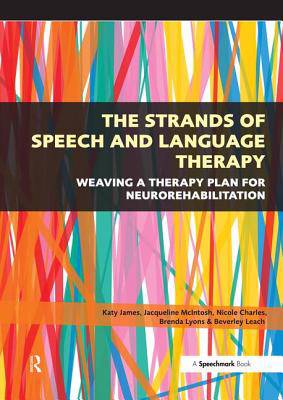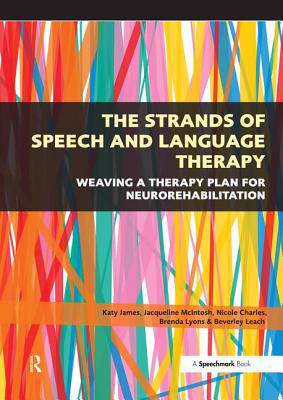
Door een staking bij bpost kan je online bestelling op dit moment iets langer onderweg zijn dan voorzien. Dringend iets nodig? Onze winkels ontvangen jou met open armen!
- Afhalen na 1 uur in een winkel met voorraad
- Gratis thuislevering in België vanaf € 30
- Ruim aanbod met 7 miljoen producten
Door een staking bij bpost kan je online bestelling op dit moment iets langer onderweg zijn dan voorzien. Dringend iets nodig? Onze winkels ontvangen jou met open armen!
- Afhalen na 1 uur in een winkel met voorraad
- Gratis thuislevering in België vanaf € 30
- Ruim aanbod met 7 miljoen producten
Zoeken
The Strands of Speech and Language Therapy
Weaving Plan for Neurorehabilitation
Katy James
Paperback | Engels
€ 60,95
+ 121 punten
Omschrijving
This book is written by a team of speech and language therapists from The Wolfson Neurorehabilitation Centre. It is intended for practitioners working with patients who have acquired communication disorders resulting from brain injury: aphasia, cognitive-communication disorder, dysarthria, apraxia. The authors believe that a therapeutic programme should have it's foundations in the linguistic, non-verbal, neurological and neurospsychological perspective of the patient's difficulties. The approach the team has developed consists of several different strangs of therapy, with each strand representing an element of the rehabilitation process: assessment; goal planning; specific individualised treatment; education; friends and family; and psychosocial adjustment. This book describes these strands, illustrates in a user-friendly way how each one relates to therapy, and fives some practical ideas of how practitioners might work within them. Each chapter begins with the guiding principles and evidence bases that underlie the rationale for one particular strand of therapy. They then follow examples of practice and case studies of a real-life example of each strand. This book describes a speech and language therapy service that aims to be responsive to patients' needs and develops tailor-made intervention programmes that arer unique to each individual. It includes downloadable resources containing assessments and practical tools.
Specificaties
Betrokkenen
- Auteur(s):
- Uitgeverij:
Inhoud
- Aantal bladzijden:
- 76
- Taal:
- Engels
Eigenschappen
- Productcode (EAN):
- 9780863888151
- Verschijningsdatum:
- 9/03/2011
- Uitvoering:
- Paperback
- Formaat:
- Trade paperback (VS)
- Afmetingen:
- 210 mm x 297 mm
- Gewicht:
- 139 g

Alleen bij Standaard Boekhandel
+ 121 punten op je klantenkaart van Standaard Boekhandel
Beoordelingen
We publiceren alleen reviews die voldoen aan de voorwaarden voor reviews. Bekijk onze voorwaarden voor reviews.











